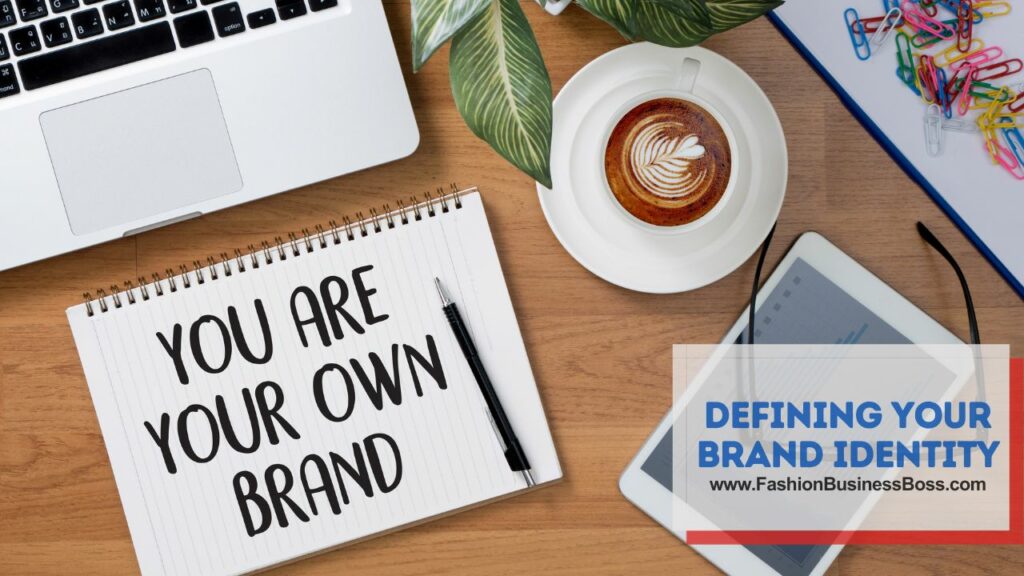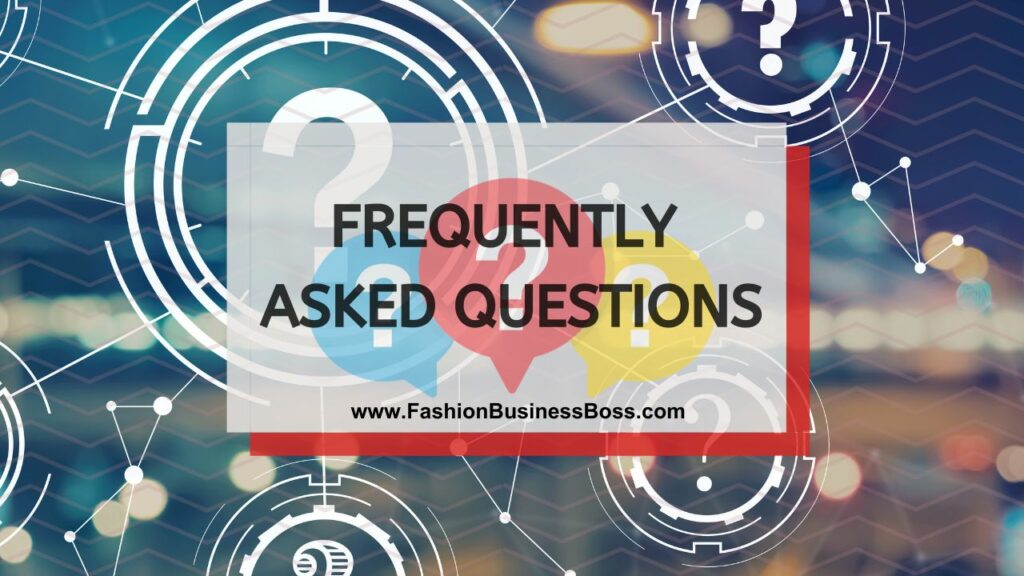Are you an aspiring fashion entrepreneur ready to make your mark in the world of clothing? Turning your passion for fashion into a clothing empire requires careful planning, creative innovation, and a strategic approach.
To craft a checklist for your clothing empire, start with brand identity, define values, research markets, create a unique selling proposition, use quality materials, and adapt to market changes.
In this article, we will guide you through the essential steps to start your clothing business.
Setting the Foundation
Defining Your Brand Identity

Crafting a unique brand identity is crucial for a clothing business. It means defining your brand’s look, core values, and target audience carefully. This process goes beyond aesthetics; it’s about infusing life and emotion into your brand, making it more than just a business.
To do this, pay attention to every detail that represents your brand, such as its design philosophy, ethical stance, and the people it appeals to. This connection you create with potential customers is personal and meaningful. It’s not just about buying clothes; it’s about them connecting with your brand on a deep level.
Creating your brand identity goes beyond choosing a logo or colors. It’s about crafting a story that embodies your brand’s spirit and values. This story builds trust and familiarity with your audience. When customers feel emotionally connected to your brand, they’re not just buying clothes; they’re investing in a story that aligns with their values and aspirations.
In the end, brand identity isn’t just about looks; it’s about connecting with your customers on a personal level. It’s about making them see your brand as an extension of themselves. This creates a deep and lasting connection. So, take the journey of self-discovery for your brand, delve into its core, and create a narrative that makes customers not just wear your clothing but embrace it as part of who they are.
Read more about: Start Strong: The Best Websites for Your Clothing Brand
Market Research: Identifying Trends and Gaps
Market research goes beyond collecting data; it’s about understanding what people truly connect with. By exploring fashion magazines, social media, and style forums, you can discover what grabs people’s attention and fascinates them.
This research also involves finding gaps in the fashion world, those needs that haven’t been met yet. It’s about noticing what’s missing, like sustainable fashion options or affordable elegant evening wear. Recognizing these gaps lets you position your brand as a pioneer, meeting needs that others haven’t.
To do effective market research, you need to go beyond numbers and algorithms. It’s about understanding people’s feelings and anticipating desires they may not even realize they have. It shows your ability to connect with potential customers, understand their unspoken wishes, and create a story that speaks to their deepest desires. So, dive into trend analysis and gap identification, as this is where you can create a brand that truly resonates with people.
Crafting Your Unique Selling Proposition (USP)
Crafting your Unique Selling Proposition (USP) is like creating a special mark that sets your clothing line apart from all the others out there. It’s a journey of self-discovery, where you uncover the unique strengths that define your brand’s essence. This journey is about more than just showing off surface-level qualities; it’s about recognizing the core values that run through every piece you create.
Your USP isn’t just a catchy phrase; it’s a promise, a reflection of your brand’s beliefs. It could be your commitment to eco-friendly practices, like using sustainable fabrics or biodegradable packaging. Or maybe your USP is the careful craftsmanship that goes into each item, ensuring top-notch quality. It could even be your dedication to making fashion affordable for everyone.
To make your USP more than just marketing talk, you have to weave it into the very fabric of your brand. Tell stories that showcase your uniqueness, not through bragging but by sharing your brand’s journey. The power of a USP lies in its ability to stir emotions and inspire choices. When customers choose you, they’re not just buying clothes; they’re joining a movement that shares their values. So, dig deep into your brand, find what makes you special, and create a USP that feels real and true.
Design and Development
Sketching Your Ideas: From Concept to Creation

Turning your creative ideas into real designs is a journey that combines imagination and skill. When you sketch your ideas, you bring them to life visually, telling the stories your clothes will share. This isn’t just a technical task; it’s like having a conversation between your mind and a blank piece of paper.
Sketching is like putting your inspiration onto paper, using a pencil to show what’s in your mind. It’s a chance to try out different styles, shapes, and details. It’s not about being perfect; it’s about capturing the heart of your ideas before they fade away.
This journey from idea to creation is all about freedom and exploration. Your boundless imagination meets the practical rules of design. It’s about finding the right balance in lines, proportions, and patterns. Sketching isn’t just a step before creating; it’s an art form itself, a dance where your ideas come to life on paper, setting the rhythm for the masterpiece you’ll make. So, use your pencil with confidence, let your ideas flow, and see your imagination become a reality step by step.
Read more about: Starter Brand Fashion Finds: Where to Begin Your Search?
Sourcing Quality Materials and Suppliers
Taking your clothing line from ordinary to outstanding depends on using top-notch materials. Sourcing these materials isn’t just about buying stuff; it’s a search for the very essence that your designs will carry. This journey goes beyond the surface, diving into the details of fabrics, feeling their textures, and understanding how they fit into your vision.
Searching for the right materials is like entering a magical world, where basic fabrics become elegant garments. It’s not just a matter of checking items off a list; it’s about exploring the qualities that will resonate with those who wear your clothes. It’s about embracing textures, figuring out how fabrics drape, and imagining how they’ll come to life when skilled artisans work with them.
As you go down this path, building relationships with suppliers is key. It’s more than just business transactions; it’s about sharing values. Reliable suppliers are the ones who care about quality, understand your brand, and join you on the journey of creating lasting art. It’s not just about bargaining; it’s about understanding that every piece of material chosen carries the spirit of your brand. So, set out on this adventure in the world of fabrics, find partners who believe in what you stand for, and let the stories of your garments begin right from the moment you choose your materials.
Prototyping and Sample Testing
The stage of creating prototypes and testing samples is a careful and detailed process where your design plans turn into real clothing. It’s about bringing your sketches to life and making prototypes that will become the canvas for your creative vision. But it’s not just about how things look; it’s about making sure they work well too, where every seam and stitch has a purpose.
Think of the prototypes like the support structure for the final product. They represent the culmination of your ideas, turned into fabrics that drape and shape according to your creative plan. Every thread woven into these prototypes holds the essence of your imagination, patiently waiting to be shown to the world. But this journey doesn’t end with making things; it’s about thorough testing, imagining how these garments will work for the people who wear them.
Testing samples isn’t just a formality; it’s the result of your commitment to creating not just beautiful designs but also comfortable clothing. It’s about understanding how different fabrics behave in different situations, how designs fit on various body types, and how small details hold up over time. This careful process makes the difference between clothes that just look nice and pieces that truly become part of the person wearing them. So, embrace this journey of creation and testing, where each prototype shows your dedication to making not just clothes but wearable works of art.
Business Logistics
Legal Formalities and Business Registration

Dealing with legal requirements and registering your business is like charting unknown territory to establish your clothing venture securely. It goes beyond paperwork; it’s a journey to ensure your business operates within the legal rules. This involves understanding the specific regulations that vary from place to place and dealing with licenses, permits, and registrations necessary for a lawful business.
Legal compliance isn’t just about following the rules; it’s about strengthening the foundation of your brand. Registering your business doesn’t just make it legitimate; it gives it an identity recognized by the law. These steps protect your enterprise from potential problems and liabilities. But it’s not just about paperwork; it also includes protecting your intellectual property.
Securing your brand’s intellectual property is like building a strong fortress. It means trademarking your brand name, logos, and designs to prevent others from copying them. This safeguards not only your creative work but also reinforces your identity in a competitive market. Dealing with legal requirements and protecting your brand isn’t just about following the law; it’s about creating a solid path for your business to thrive while confidently navigating the complex world of legal matters.
Read more about: Starting a Clothing Line: The Cost Breakdown
Creating a Solid Business Plan
Creating a solid business plan goes beyond crafting a document; it’s a detailed blueprint for the path your clothing venture will take. It’s not just about setting goals; it’s about understanding your ambitions and planning your strategy. Your business plan includes where you’re going and the steps you’ll take, combining market knowledge, financial predictions, and strategic decisions.
This document is not just for show; it’s a dynamic tool that guides your choices. It captures your vision and how it fits into the ever-changing market. Your goals in the plan are more than just aspirations; they are the driving forces behind your journey. The financial forecasts in the plan aren’t just numbers; they represent your dreams, giving life to your goals. Ultimately, your business plan is not just words on paper; it’s the compass that directs your actions, the guiding star that keeps you on track when things change. It’s not just a path to triumph; it’s the embodiment of your strategic wisdom, paving the way for your clothing venture to become a reality.
Establishing Manufacturing and Distribution Channels
The choice between in-house manufacturing or partnering with external suppliers plays a crucial role in shaping your operational setup. This decision isn’t just about the practical aspects; it’s about aligning your capabilities with your vision. It involves carefully considering the details of both options and balancing the advantages of hands-on control with the efficiency of outsourcing.
Once you’ve determined your manufacturing approach, the next step is to establish efficient distribution channels. This phase goes beyond logistics; it’s about creating a smooth process that connects your products with eager customers. It involves planning how your garments move from production to the hands of buyers while staying true to your brand’s values. Effective distribution isn’t just about making transactions; it’s about orchestrating an experience that reflects your clothing line’s essence. As you navigate this path, keep in mind that it’s more than just moving products; it’s about carrying your brand’s identity throughout each step, ensuring that the journey is as memorable as the final destination.
Online Presence and Marketing
Building a Compelling E-Commerce Website

Entering the world of creating a compelling e-commerce website is like building a virtual showcase for your clothing line’s identity. Your website isn’t just a set of web pages; it’s a living portal that captures your brand’s narrative and products. This journey goes beyond technical coding; it’s about crafting an engaging online experience that connects with visitors. It entails creating a user-friendly interface that not only presents your garments but also welcomes customers into your brand’s universe.
Your e-commerce platform is more than just a place for transactions; it’s your digital shopfront, reflecting your brand’s aesthetics and principles. This phase goes beyond mere layout; it’s about translating the sensory aspects of shopping into the online realm. Your website should offer more than just product displays; it should be an interactive space where customers can explore, visualize, and engage with your offerings. It’s about building a space that simplifies the buying process, ensuring that every click is smooth. As you embark on this journey, remember that your website isn’t just a platform; it’s a digital representation of your brand, inviting customers to enter your world and experience your creations in a space where screens and threads come together.
Read more about: Starting a Clothing Line? These T-Shirts Are Key
Implementing SEO and Digital Marketing Strategies
Venturing into the realm of implementing SEO and digital marketing strategies involves a balanced approach that harmonizes your brand with the digital world. This journey demands a comprehensive perspective, as it’s about establishing a digital presence that connects authentically. It’s more than just making technical adjustments; it’s about seamlessly integrating your brand into the online landscape.
Optimizing your website for search engines is like strategically placing road signs on the digital highways. It’s about understanding how potential customers navigate the web and ensuring that your brand is both visible and inviting. However, this effort goes beyond SEO; it encompasses various digital marketing techniques. Content marketing involves creating stories that link your brand’s narrative with your audience’s interests. Email campaigns act as personalized invitations, encouraging recipients to explore your online space. Pay-per-click advertising serves as a brushstroke on the digital canvas, directing the right audience to your offerings. As you navigate these strategies, remember it’s not just about algorithms and trends; it’s about creating a harmonious digital presence that reflects your brand’s identity and resonates with your customers’ online journey.
Leveraging Social Media Platforms
Building a presence on social media goes beyond the surface; it’s about creating a digital identity that feels genuine while building a real connection with your audience. It’s not just about making posts; it’s a blend of pictures, stories, and conversations that reflect your brand’s core.
Social media platforms like Instagram, Facebook, and Pinterest are not just places to display your products; they’re canvases where your designs come to life. These platforms offer glimpses into your creative world, letting your audience see your brand’s growth up close. Beyond showcasing your creations, this journey involves engaging with your audience. It’s about replying to comments, joining discussions, and forming a community that goes beyond mere transactions. The loyalty you build isn’t just a digital tie; it’s proof of your brand’s ability to foster connections beyond the screen. As you explore this world, remember it’s more than just posting content; it’s about crafting a digital story that mirrors your brand’s values, encourages interaction, and touches the hearts of your audience.
Launch and Beyond
Hosting a Spectacular Launch Event

Creating an unforgettable launch event is about more than just the practical details; it’s about crafting an experience that reflects your clothing brand’s essence. This process involves careful planning, ensuring that every aspect of the event aligns with your brand’s identity. It’s not just about logistics; it’s about creating an atmosphere that immerses attendees in your brand’s world.
Hosting a launch event isn’t just about introducing your brand; it’s about sparking curiosity and excitement. It’s a chance to share your brand’s story and the passion behind your creations. This phase goes beyond choosing a venue; it’s about designing an experience that deeply connects with guests. From visual elements that match your brand’s style to interactive components that engage attendees, every part of the event should embody your brand’s essence. As you embark on this journey, remember that it’s more than a single event; it’s the beginning of your brand’s story, leaving a lasting impression on attendees and setting the stage for what’s to come.
Read more about: Starting from Scratch: How to Begin Your Clothing Brand?
Collecting and Utilizing Customer Feedback
Recognizing the importance of customer feedback goes beyond a surface-level understanding; it’s about embracing a valuable source of insights that drive the growth of your clothing brand. This journey is not superficial; it involves actively listening to the thoughts and opinions of those who interact with your products. Customer feedback is not mere commentary; it provides a window into their experiences and desires, offering a comprehensive view of their needs.
Listening to customer opinions is more than a routine task; it’s a commitment to constant improvement. Every word shared could contain valuable insights that guide improvements to your products and services. This phase is not just about collecting feedback; it’s about analyzing the details, identifying common themes, and uncovering unspoken needs. The process doesn’t stop at collection; it extends to taking action. It’s about using these insights to make tangible changes, adjusting your offerings to match the preferences and expectations of your audience. As you navigate this journey of feedback, remember that it’s more than just comments; it’s a collaborative process that ensures your brand evolves in harmony with the desires of those who wear your creations.
Adapting to Market Changes and Growing Your Brand
Adapting to changes in the market and growing your brand goes beyond surface-level adjustments; it’s about embracing change as a catalyst for expansion. This journey isn’t just about reacting; it’s about building agility that not only helps your clothing brand survive but also thrive amid evolving trends. Staying aware of market shifts is an active effort, a continuous conversation with the ever-changing landscape that shapes your brand’s path.
Adaptability isn’t a one-time task; it’s a mindset ingrained in your brand’s identity. It’s about understanding that staying relevant is an ongoing pursuit. This phase involves more than simply keeping pace; it’s about innovating to propel your brand forward. It’s about paying attention to emerging trends and imagining how your creations can resonate in new ways. It’s about broadening your product range beyond the familiar and exploring areas that align with your brand’s essence. As you embark on this journey of adaptation and growth, remember that it’s not just about reacting; it’s about proactively shaping your brand’s future, ensuring its enduring appeal in the ever-changing market landscape.
Conclusion
Embarking on the journey from catwalk to commerce is both exhilarating and demanding. By following this ultimate checklist, you’ll be well-equipped to launch your clothing empire with confidence. Remember, growth in the fashion industry requires dedication, creativity, and a deep understanding of your audience. Now, it’s time to turn your fashion dreams into reality.
Frequently Asked Questions

How much capital do I need to start my clothing business?
Starting costs can vary widely based on factors like scale, location, and design complexity. A detailed business plan will help estimate your initial investment.
Do I need formal fashion education to start a clothing brand?
While formal education can be beneficial, it’s not mandatory. Passion, creativity, and a willingness to learn are equally important.
How do I choose the right manufacturer for my clothing line?
Research different manufacturers, consider their expertise, quality, and capacity. Request samples and assess their compatibility with your brand.
To learn more about starting your own clothing business, check out my startup documents here.
The information provided by FashionBusinessBoss.com (“The Site”) is for general informational purposes only. All information on the Site is provided in good faith, however, we make no representation or warranty of any kind, express or implied, regarding the accuracy, adequacy, validity, reliability, availability or completeness of any information on the Site. Under no circumstance shall we have any liability to you for any loss or damage of any kind incurred as a result of the use of the Site or Reliance on any information provided on the Site. Your use of the Site and your reliance on any information on the Site is solely at your own risk. This blog post is for educational purposes only and does not constitute legal advice. Please consult a legal expert to address your specific needs. Terms and Conditions. (https://fashionbusinessboss.com/terms-and-conditions/)

Meet Shawn Chun: Entrepreneur and Fashion Business Fan.
I’m a happy individual who happens to be an entrepreneur. I have owned several types of businesses in my life from a coffee shop to an import and export business to an online review business plus a few more and now I create online resources for those interested in starting new ventures. It’s demanding work but I love it. I do it for those passionate about their business and their goals. That’s why when I meet a designer or boutique owner at a craft fair, farmers market, retail location or anywhere else I see myself. I know how hard the struggle is to retain clients, find good employees and keep the business growing all while trying to stay competitive.
That’s why I created Fashion Business Boss: I want to help fashion business owners like you build a thriving business that brings you endless joy and supports your ideal lifestyle.

